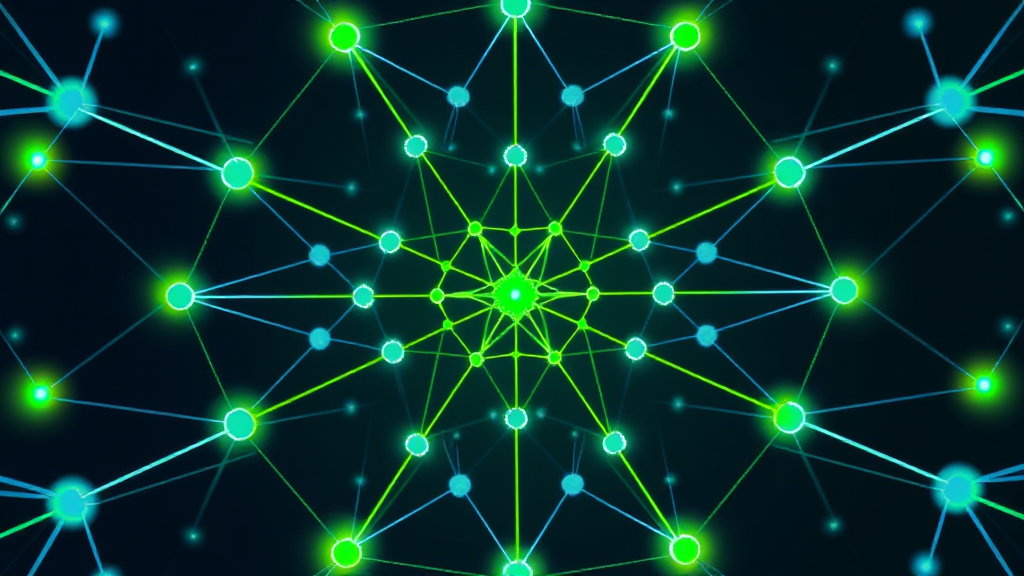The Evolution and Importance of AI in Robotic Programming

For a deeper dive, see our
.
This modern abstract graphic illustrates the scalable growth potential of binary MLM structures, emphasizing innovation and endless opportunity.
Introduction
The intersection of artificial intelligence (AI) through AI services and robotic programming has revolutionized industries, transformed workflows, and set new standards for efficiency and innovation. As businesses increasingly rely on automation to stay competitive, understanding the role of AI in robotic programming becomes crucial. This article explores the evolution of AI-driven robotics, its importance in modern business operations, and how it shapes the future of technology.
The Evolution of AI in Robotic Programming
Early Beginnings: Automation and Robotics
The journey of AI in robotic programming began with basic automation. In the mid-20th century, robots were introduced into manufacturing to perform repetitive tasks, such as welding and assembly line work. These early robots were programmable but lacked intelligence. They followed predefined instructions and operated within rigid parameters.
Integration of Machine Learning
The 21st century marked a turning point with the integration of machine learning (ML) into robotics. ML algorithms enabled machines to learn from data, adapt to new information, and improve their performance over time. This shift transformed robotic programming by introducing flexibility and autonomy. Robots could now make decisions based on real-time data, optimizing processes and responding to dynamic environments.
Emergence of AI-Powered Automation
The rise of deep learning and neural networks further advanced AI in robotic programming. Today, robots powered by AI services are capable of complex tasks such as object recognition, natural language processing, and even creative problem-solving across mobile applications, e-commerce platforms, and web systems. These advancements have expanded the applications of robotics across industries, from healthcare to logistics.
The Core Importance of AI in Robotic Programming
Enhancing Efficiency and Productivity
AI-driven robotic systems optimize workflows by performing tasks with speed and precision. In manufacturing, for example, robots equipped with vision systems powered by AI services can inspect products for defects in real time, reducing errors and downtime. This level of efficiency is unmatched by human workers alone.
Enabling Complex Decision-Making
Traditional robotics relied on rigid programming, limiting their ability to adapt to changing conditions. AI introduces decision-making capabilities that allow robots to analyze data, evaluate options, and execute the best course of action. This intelligence is particularly valuable in industries like finance and logistics, where dynamic scenarios are common.
Expanding Applications Across Industries
AI in robotic programming has opened doors to new possibilities across sectors:
Healthcare Robotic systems assist in surgeries, enabling greater accuracy and reducing recovery times.
Agriculture Autonomous drones and machines optimize crop monitoring and harvesting.
- Retail AI-powered robots manage inventory across e-commerce platforms, enhance customer experiences through mobile apps, and streamline operations via web-based systems.
Driving Innovation and Growth
The fusion of AI and robotics fosters innovation by pushing the boundaries of what machines can achieve. Companies that embrace AI-driven robotic programming gain a competitive edge, improve operational efficiency, and unlock new revenue streams.
Challenges and Considerations in AI-Driven Robotic Programming
Data Dependency
AI systems rely heavily on data for training and decision-making. Insufficient or poor-quality data can lead to inaccurate results, highlighting the need for robust data management strategies.
Ethical and Safety Concerns
As robots become more intelligent, ethical considerations arise. Issues such as job displacement, privacy violations, and potential misuse of AI-driven systems must be addressed through regulations and industry guidelines.
Technical Complexity
Implementing AI in robotic programming requires advanced technical expertise. Integrating machine learning models into robotics involves complex algorithms, hardware, and software coordination, posing challenges for businesses looking to adopt these technologies.
The Future Outlook for AI-Driven Robotic Programming
Advancements in Human-Robot Collaboration
Future developments will focus on improving human-robot interaction. Collaborative robots (cobots) designed to work alongside humans will become more prevalent, enhancing productivity and safety in shared workspaces.
Integration with Edge Computing
Edge computing will play a pivotal role in AI-driven robotics by enabling real-time data processing closer to the source of generation. This reduces latency and enhances decision-making capabilities for robotic systems.
Sustainability and Green Technologies
AI in robotic programming will contribute to sustainability efforts by optimizing resource utilization, reducing waste, and lowering energy consumption across industries.
Conclusion: Embracing the Future with AI-Driven Robotic Programming
Ready to take the next step?
.
The evolution of AI in robotic programming represents a transformative shift in technology. By enhancing efficiency, enabling complex decision-making, and expanding applications across industries, AI-driven robotics is shaping a new era of innovation. Despite challenges, the potential benefits make it an essential investment for businesses seeking to thrive in an increasingly competitive landscape.
As we look ahead, embracing AI-driven robotic programming will not only drive growth but also pave the way for a future where humans and machines collaborate seamlessly to achieve unprecedented success.
Call to Action
Ready to harness the power of AI in your robotic programming initiatives? Contact us today to explore how our expertise in artificial intelligence and robotic systems can help you unlock new possibilities and stay ahead in your industry.
Related Articles
The Future of AI-Driven Automation: Revolutionizing Workflow Efficiency
Unlock business efficiency with AI-driven automation: discover the latest trends, benefits & challenges in revolutionizing workflows.
Elevating Business Efficiency with Custom AI Solutions: EifaSoft's Robotic Programming and Software Development Expertise
Here is a concise and compelling SEO meta description for your blog post: Elevate business efficiency with EifaSoft's custom AI solutions! Discover how our rob
Unleashing Your Potential - How Multi-Level Marketing Can Propel Your Entrepreneurial Journey
Unlock your entrepreneurial potential with Multi-Level Marketing strategies that drive scalable success & financial freedom.